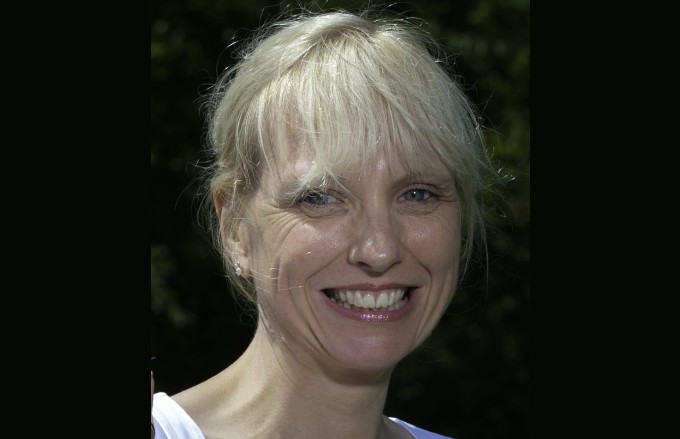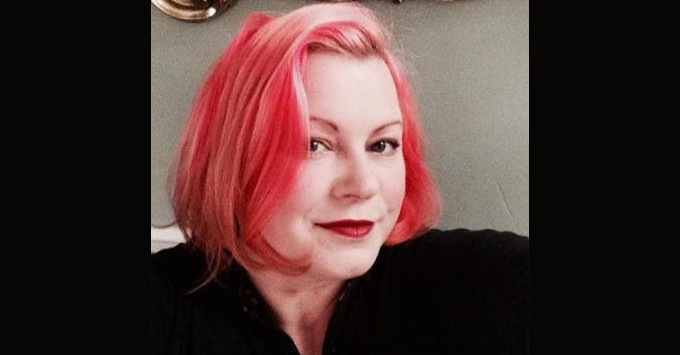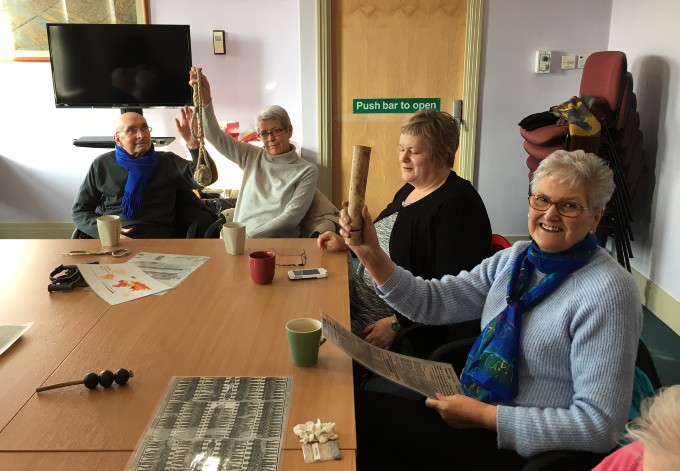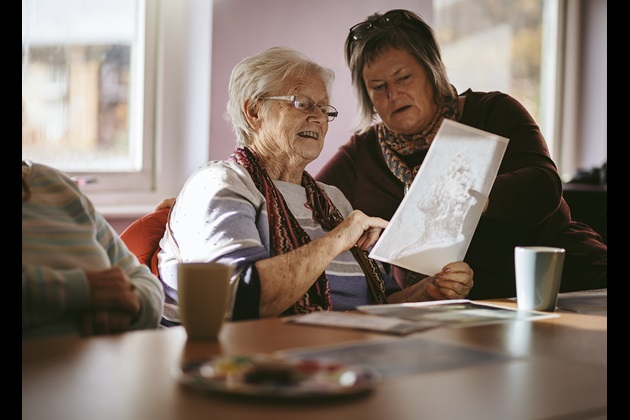In Tyne and Wear, a new resource for health and social care professionals is exploring the clinical benefits of museum objects, tea-tasting, painting and more
Despite evidence showing engaging in cultural activities improves health and wellbeing for older people – including stroke survivors and those with dementia – all too often they’re seen as an added extra, rather than essential to high-quality care.
“We know from research that being involved with arts and heritage has a positive impact on older people, but many staff just see these kinds of activities as an ‘add-on’, if they have a bit of time spare at the end of the day,” says Dr Juliana Thompson, associate professor in adult nursing at Northumbria University.
Now a new free resource for health and social care professionals - developed in partnership with the university and Tyne and Wear Archives and Museums (TWAM) – hopes to change practice for good. “We’re trying to steer staff to see this as part of their clinical remit,” says Juliana.

The resource offers a wide range of workshops based around TWAM’s collections. These include making cosmetics, chocolate and tea tasting, looking at local cinema buildings or bridges across the River Tyne, and creating artwork using colours made with spices and vegetables. During the pandemic, they’ve adapted it so that some of the activities can run one-to-one, rather than in groups.
In one example, exploring a Roman herb garden looks at the various uses of herbs in the past, with those taking part creating their own fresh mint sauce, mimicking how the Romans would have made it using a pestle and mortar. But it’s the detailed clinical outcomes that make the resource unique, with potential benefits classified under four headings: cognitive, knowledge and learning; physical and mobility; mindful and emotional; and social.
In practice, this means making a sauce could help someone’s dexterity and fine motor skills; distract them from chronic pain; support speech and communication; stimulate their appetite; and even prompt discussions about health promotion, hydration and nutrition. “The smell of the mint in the room is amazing and it gets people talking about their memories of making roast dinners in the past,” says outreach officer, Zoe Brown. “Some have had big families, and it’s hard to cook when it becomes just you. But this stimulates their hunger and they may take the sauce home and make a lamb dinner for themselves.”
We talked about the area of Newcastle she was from, using old photographs of places she would recognise. It jogged her memories, lifting her spirits
She has always been keen on helping health and social care professionals make the best use of museums and galleries in the care they provide. “Over the last few years, I’ve mused on the idea of creating a museums health service that would work alongside NHS and social care services,” says Zoe. Meeting Juliana helped bring her ideas to life, with much of the work to get the project off the ground happening outside their day-to-day working lives. “Basically, we did it on people’s goodwill,” she says.
For Zoe, the choice of activity isn’t the most important aspect. “We’re looking at it from what the professional is trying to achieve for their patient,” she explains. “This means identifying the desired clinical outcome first, before selecting something appropriate to help them get there.”

Now they hope to attract funding so they can take the project further, including evaluating its impact. “This will focus on staff,” says Juliana. “There’s already so much research on how these kinds of activities support older people, showing very positive benefits. The sticking point is getting health and social care professionals to use it. We want to know if they aren’t using the resource, why not, and how do we encourage them. It’s about trying to get them to open up to other ideas, rather than focusing solely on a clinical model.”
Crucially, they want to convince practitioners that engaging patients and residents in these sorts of pursuits needs to become an integral part of their care practice, valuing everything this approach offers. “If people embed it within their clinical practice, there are so many advantages that have so far remained untapped,” says Juliana.
Using the resource in practice
For Helen Smith, the resource helped her to connect with care home residents, helping to boost their mood.
“We had one lady with advanced dementia who thought she’d been abandoned by her family,” says Helen, who qualified with a masters in adult nursing in March 2020. “But if we talked about the area of Newcastle where she was from, using old photographs of places she would recognise, it jogged her memories, stimulating conversations and really lifting her spirits.”
Helen became involved in helping to develop the resource in her final year as a student, when she opted to do a six-month long internship at a care home, rather than a management placement in theatre. “I’d been a carer before and was really passionate about older people’s care, so this was right up my street,” says Helen, who is now working on a respiratory ward, but still doing bank shifts at the care home when possible.

Other successful workshops involved making scented bath salts. “It really helped some of those with dementia, who had almost shut off different senses, such as smell,” says Helen. “If someone didn’t have dexterity, we helped them. Working together helped people to feel they were part of something. Some residents with dementia can feel driven to move around the home, so just supporting them to sit and focus on something for half-an-hour is a real achievement for them.”
Although she admits it was hard to get staff on board initially, the rewards were tangible. “It can be an uphill battle trying to change some people’s minds to take this approach, rather than relying on medication,” says Helen. “But we wanted to develop a holistic model that supported the person, not just their condition. You can really see a difference and eventually everyone got excited about it.”
A case of memories
Realising that a large number of care home residents have a nursing background, or had first-hand experience of nursing care during the early days of the NHS, the RCN has created a ‘case of memories’ to be used in facilitated reminiscence.
"It’s a wonderful resource," says RCN Professional Lead for Care of Older People and Dementia, Dawne Garrett. "It’s really important everyone has the opportunity to take part in these kinds of activities."
The district nurses’ bag, based on one from the 1950s-60s, includes replicas of thermometers, ear syringes and scissors, alongside a guided facilitation sheet and nurses’ stories. Suggestions for extra items to add to the sensory experience include cotton wool, olive oil, crepe bandages and antiseptic cream.
- Cases will be available to borrow free from your nearest RCN Library later this year, once lockdown eases. Check with your local library for confirmation of reopening.
- Explore RCN resources on dementia here.








